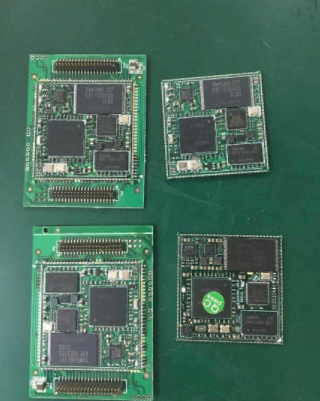Comparison of advantages and disadvantages of PCB circuit board baking
PCB circuit board baking can remove the internal stress of the PCB board, that is to say, stabilize the size of the PCB. The baked board has a relatively large improvement in the degree of warpage.
Advantages of baking: After baking, the moisture in the pad can be dried, further strengthening the welding effect, and reducing the false welding and repair rate.
Disadvantages of baking: The color of the PCB board may change, which affects the appearance.
The OSP process usually has a 6-month shelf life after packaging. If it exceeds this date, it basically needs to be returned to the PCB manufacturer for rework. If the baking is usually 100-120°C, the baking time is about 2H, don't bake too long! It must be used up within 24 hours of exposure to the air, otherwise oxidation is prone to occur (this depends on the ability of the supplier to make, some OSPs can be used for a longer period of time, and it is better to use up within 8 hours after normal unpacking).
Baking method and preservation method of PCB circuit board

⑴Large circuit boards (16PORT and above, including 16PORT) are placed in a flat type, with a stack of 30 pieces. Open the oven and take out the PCB within 10 minutes of baking to cool down.
⑵Small and medium-sized PCBs (8PORT and below 8PORT) are placed horizontally. There are 40 pieces in a stack, and the number of vertical type is unlimited. Open the oven within 10 minutes of baking and take out the PCB and place it flat and cool it naturally.
The specific storage time and baking temperature of PCB circuit boards are not only related to the production capacity and production process of the PCB manufacturer, but also have a great relationship with the region.
The PCB made by the OSP anti-oxidation process and the pure immersion gold process usually has a shelf life of 6 months after packaging. It is generally not recommended to bake for the OSP process.
The preservation and baking time of PCB circuit boards have a lot to do with the region. In the south, humidity is usually more effective, especially in Guangdong and Guangxi, where there will be "returning to the south" weather in March and April each year., It is rainy every day, and it is very humid at this time. PCB must be used up within 24 hours when exposed to the air, otherwise it is easy to oxidize. After normal opening, it is good to use it up in 8 hours. For some PCBs that must be baked, the baking time will be longer. In northern areas, the weather is usually more dry than the efficiency, the storage time of the circuit board will be longer, and the baking time can also be shorter. The baking temperature is usually 120±5 degree Celsius, and the baking time is determined according to the specific situation.
For PCB storage time, baking time and temperature, specific problems must be analyzed in detail, and specific choices must be made on the basis of PCB management and control specifications, according to the production capacity, technology, region and season of different circuit board manufacturers.
Material operation process in PCBA production
PCBA production and processing plants have clear regulations on how to operate and use "material operation procedures" in the production process. The purpose is to better implement the quality standards for material use, correctly and timely use materials in the expiration date, and ensure the storage environment and quality of materials, To prevent a series of quality problems in the product.
The standard of material operation process in PCBA production:
1. The quality assurance department stipulates the validity period of each batch of raw materials entering the factory in accordance with relevant standards.
2. The warehouse manager prints the material label (indicating product name, serial number, specification/quality standard, incoming material) in the ERP system according to the production date of the incoming material, the PASS stamp issued by the quality inspection department, and the company's internal use validity period. Quantity, current quantity, production date, effective date of use, effective date). The reinspection date is generally the first week of the month in which the effective date is used.
3. The warehouse manager should check the validity period of stock materials at the beginning of each month, and notify the quality assurance department of the materials that are close to the validity period and reach the re-inspection date.
4. For the raw materials with the expiry date of use, the warehouse manager should fill in the re-inspection form in time to notify the quality inspection department to re-inspect, and replace it with a yellow status sign.
5. After receiving the re-inspection notice from the warehouse manager, the quality inspection department arranges the re-inspection in time and issues an inspection report in a timely manner.
6. For materials that pass the re-inspection, the quality assurance department should approve the time limit and stipulate that they should be used up within the time limit; for the materials that cannot be used up, the purchasing department should negotiate with the supplier to exchange it or the warehouse manager will ask the quality The guarantee department applies for processing as non-conforming products.
7. The unqualified materials shall be treated as unqualified products.
8. SMT solder paste should be used within 6 months after the production date. Solder paste that exceeds the expiration date will be treated as a non-conforming product. The steps are the same as the processing of unqualified products.